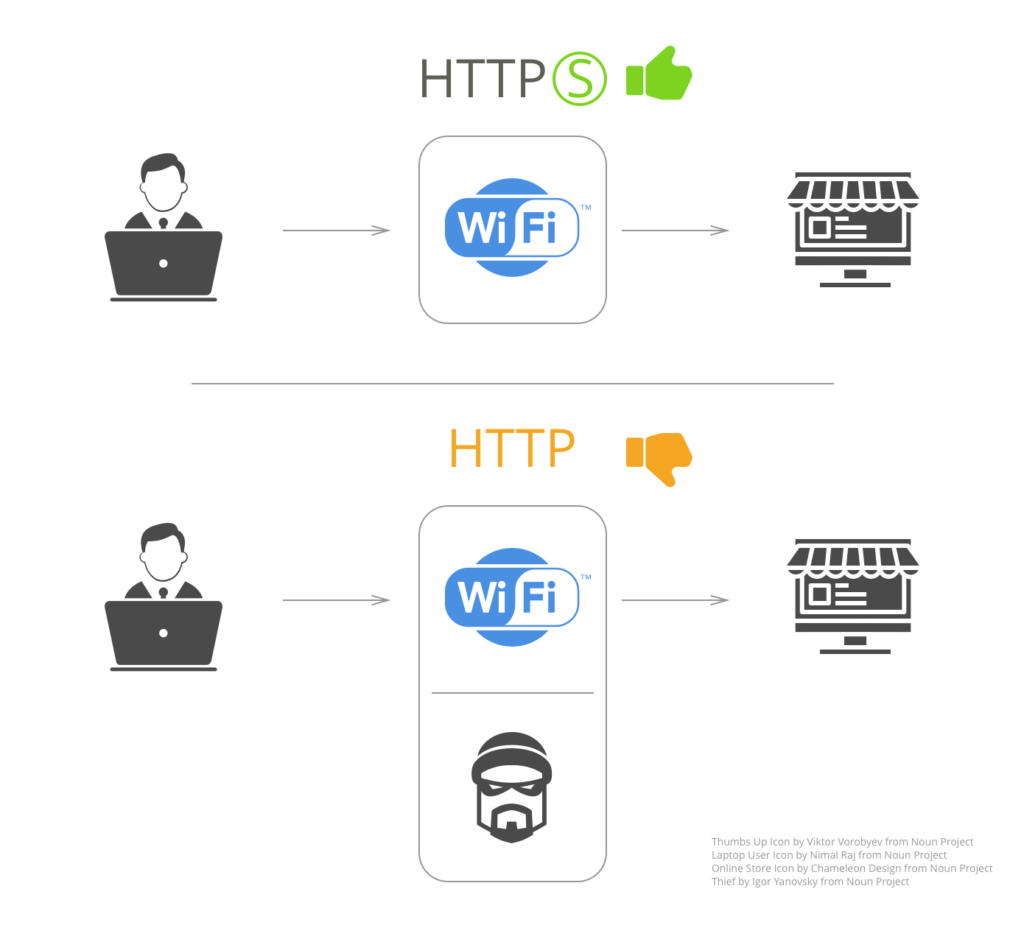Back in August 2014 Google informed everyone that switching the website from HTTP to HTTPS will give the site some SEO advantages and a minor ranking boost. And what can we see now in 2017?
There are a lot of sites which still use the HTTP-protocol and are not in a hurry to change it. Let’s review the situation in detail and try to analyze why moving to HTTPs is really important.
Understanding HTTPs vs HTTP
The HTTP-protocol (Hyper Text Transfer Protocol) is a widely used protocol to receive data from websites. All messages that are sent via HTTP are usually text information, and this fact makes it vulnerable.
The HTTPs-protocol (Secure Hyper Text Transfer Protocol) is a very serious requirement for websites that operate users’ personal information such as credit card numbers, usernames, passwords, and so on. For protection against attacks such as content stealing or substitution, the HTTPs-protocol was created. HTTPs is essentially the same HTTP-protocol, but it works through encrypted transport mechanisms – SSL and TLS.
Some merchants prefer to use HTTPs on the pages where visitors enter their bank data or personal information and don’t worry about other pages where this kind of data is not available. Check out pages mostly work on the HTTPs-protocol in serious online stores, but HTTP is used on product pages, blog and so on. “We have simple content and don’t operate personal data here”, – they say.
Ahead, we look at why this may be dangerous and why the HTTPs-protocol is needed.

Mobile technologies and mobile internet become more and more popular, and seamless access to Wi-Fi is not recommended but must be available in such places like restaurants, coffees, hotels, shops, supermarkets, even parks and other rest zones. What if the HTTP-protocol is used here? At first glance, it seems that it is absolutely normal and safe.
If the data is transferred through a provider in the direct form, it is not so difficult to modify it and implement a script or frame, or additional functionality. So, don’t be surprised if you use Wi-Fi in public places and see advertising of a taxi service or “attractive” discounts, even on quite reputable websites which never place advertising banners or pop-up ads on their pages.
Many free Wi-Fi points are used not only to provide additional service for visitors. Try to search for “Wi-Fi Monetization” in Google and you can see how many opportunities are available. These are special projects with the focus on making money through advertising. In fact, your potential customers can read an interesting article in the coffee house and receive the ads about discounts for coffee, local shops campaigns, additional service and more. But it is not so bad compared to getting the typical spam advertising as you can see below.
In case the visitors get an irritating pop-up window which obstructs the text on the page, they can leave the site. This means that, if you are a site owner and use the HTTP-protocol, you can’t fully control what the visitors see on your site. As a result, you may lose your customers.
You don’t see banners on your website because you access it from your working place or use your home Wi-Fi. But try to test your site in any free Wi-Fi zone where many people prefer to use mobile devices and they can search for some products and even try to make an order in your online store. You may be very surprised with the content on your website.
How does HTTPs vs HTTP protocol affect SEO?
There is no direct influence of the HTTPs-protocol on SEO. But indirect effect is present. The main factor here is the dwell-time which is used by search engines in various ranks and anti-spam algorithms. Such advertising spoils the dwell-time which, on one hand, reduces the authority of the site and, on the other hand, impairs behavioral factors. Both of these are bad for SEO. The larger is the percentage of the audience who use free Wi-Fi, the worse influence for your unprotected HTTP site.
Basically, the problem is more important to mobile search. We can’t track the results here because necessary tools are not available now. But as soon as we have such metrics, HTTPs will become much more popular.
What to do right now?
In Google Analytics, you can compare the statistics for the two segments – mobile and desktop traffic. Analyze the number of bounces and time spent on the site of both segments and you will quickly realize how critical your issue is and see whether or not to change the protocol to HTTPs.
The source that was used to prepare the article.





